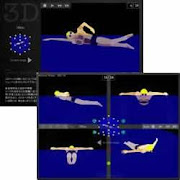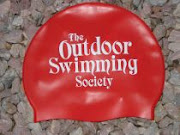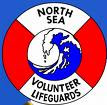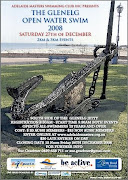 Courtesy of WOWSA, Huntington Beach, California.
Courtesy of WOWSA, Huntington Beach, California. As the Southern Hemisphere heads into fall and the Northern Hemisphere heads into spring, pool swimmers recently asked us for advice on swimming in cold water for the first time.
These are our top 10 bits of advice:
+Britta+pre-race.jpg) 1. Use lanolin to help alleviate some of the "sting and shock" of cold water. The lanolin should be firmly pressed into the skin, especially around the neck, under arms, around the torso and upper legs. It is best to apply with rubber gloves and, remember, lanolin is tough to get off. See photo of International Marathon Swimming Hall of Fame inductee Britta Kamrau with lanolin on before a cold-water race on left.
1. Use lanolin to help alleviate some of the "sting and shock" of cold water. The lanolin should be firmly pressed into the skin, especially around the neck, under arms, around the torso and upper legs. It is best to apply with rubber gloves and, remember, lanolin is tough to get off. See photo of International Marathon Swimming Hall of Fame inductee Britta Kamrau with lanolin on before a cold-water race on left.2. Use tight-fitting silicon ear plugs; an old surfer's trick.
3. Wear 2-3 heavy silicon swim caps - or better yet - a neoprene surfer's cap that completely covers the ears with a strap that goes under the chin.
4. Acclimatize over time where one gradually builds up from a few minutes in the cold water to a few hours. It helps if one gets in twice per day, if possible.
 5. Swim as close to shore as possible, even if one has to fight through surf. If not possible, then swim with a kayak, boat, paddleboard escort, or with another swimmer.
5. Swim as close to shore as possible, even if one has to fight through surf. If not possible, then swim with a kayak, boat, paddleboard escort, or with another swimmer.6. Use a surfer's rashguard, wetsuit, triathlon speedsuit or technical swimsuit.
7. Drink warm liquids before and immediately after.
8. Jog along the shore, initially with only then feet, then the lower legs and then the upper legs in the water if the water is really too cold to first jump in. Then get your hands wet and splash water on your face and upper body before jumping in.
9. Roll over on your back if you hyperventilate when you first get in. Take deep breaths while you are swimming backstroke. Try to kick strongly, but take smooth long strokes with your arms while you control your hyperventilation. After you can breathe normally, then roll over on your back and start to swim freestyle.
10. Think positively, but always think intelligently. If you are shivering or continue to hyperventilate, get out.
Other people have other methods (e.g., gain a bit more body fat) - we would love to hear them.
Upper photo of Graham Grindley-Ferris in Cape Town, South Africa. Lower photo of Melanie Gow and Tony Sellmeyer swimming off of Robben Island in South Africa. Photo of Britta Kamrau by Dr. Jim Miller.
Copyright © 2009 by World Open Water Swimming Association




















4 comments:
Nice tips for cold water swimming. It really helps amateur. One more tip I would like to share is always wear earplugs when you are going to swim.
Yeah..every time I swim in cold water my ears get blocked then My mom bought me Ear Plugs for Swimming to protect water from entering my ear canal.
This blog is very useful and interesting. I like your idea of sharing these tips for cold water swimming. It is very useful for all of us. Thanks for sharing this post.
Thanks for sharing this blog, it's a really wonderful article, keep sharing such blogs.
aquatic ear plugs Lancaster, PA
Post a Comment